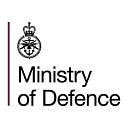Stranded in the middle of the Atlantic Ocean… on purpose
Lieutenant Jonathon ‘Pony’ Moore, recently found himself being dumped into the warm Atlantic Ocean as part of a ‘downed pilot’ scenario.
Lieutenant Moore was the focus of a ‘downed pilot’ scenario, which aims to test the rescue skills of both HMS Queen Elizabeth and the Commando Helicopter Force during the Westlant 19 deployment. — the aircraft carrier’s deployment to North America.
The duty search-and-rescue aircraft from 845 Naval Air Squadron was scrambled to rescue a downed pilot. Once on the scene, the aircraft was able to use its onboard equipment as well as putting the full sea-search skills of the crew to the test to rescue the survivor.
Aircrew are taught how to escape from the aircraft and surface, along with how to assist with their own extraction.
As the ship prepared to embark UK F-35B Lightning jets for the first time, the ship has also prepared for the worst-case scenario — where it might need to rescue a ‘downed pilot’ or other isolated persons, at sea, recovering them back to the ship.
Life support jackets, single-seat liferafts and a range of rescue beacons were tested.
Testing the communication lines from the beacon back to the ship, aircrew then launched and honed onto the ‘downed pilot’s’ beacon to swoop in and pick him up.
This training was invaluable both to the ship’s survival equipment section, proving they could deliver this training in the future from the carrier and further support the aircrew training requirements whilst away from the UK.
The search-and-rescue Merlin is on standby to cover the carrier and her task group, which includes HMS Dragon, HMS Northumberland and RFA Tideforce.
845 Naval Air Squadron have three Merlins on board the carrier, with B-Flight operating under the call sign of Furious Flight, named after HMS Furious — the first British warship on which a deck landing was conducted at sea.
